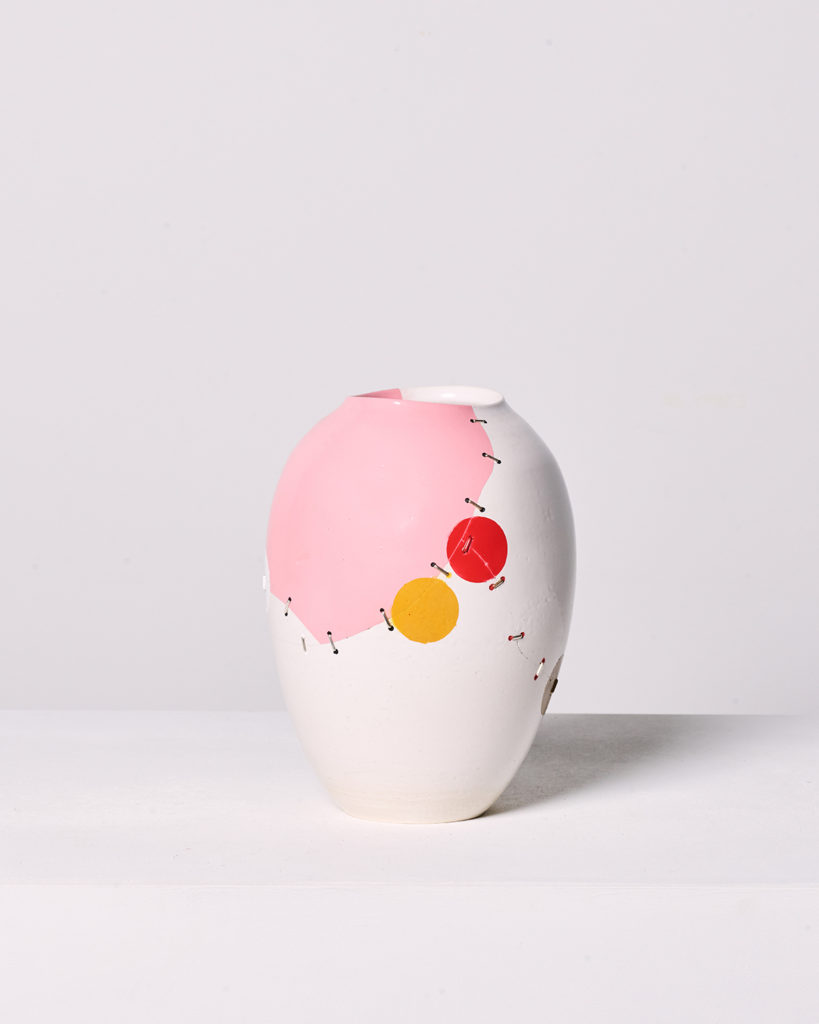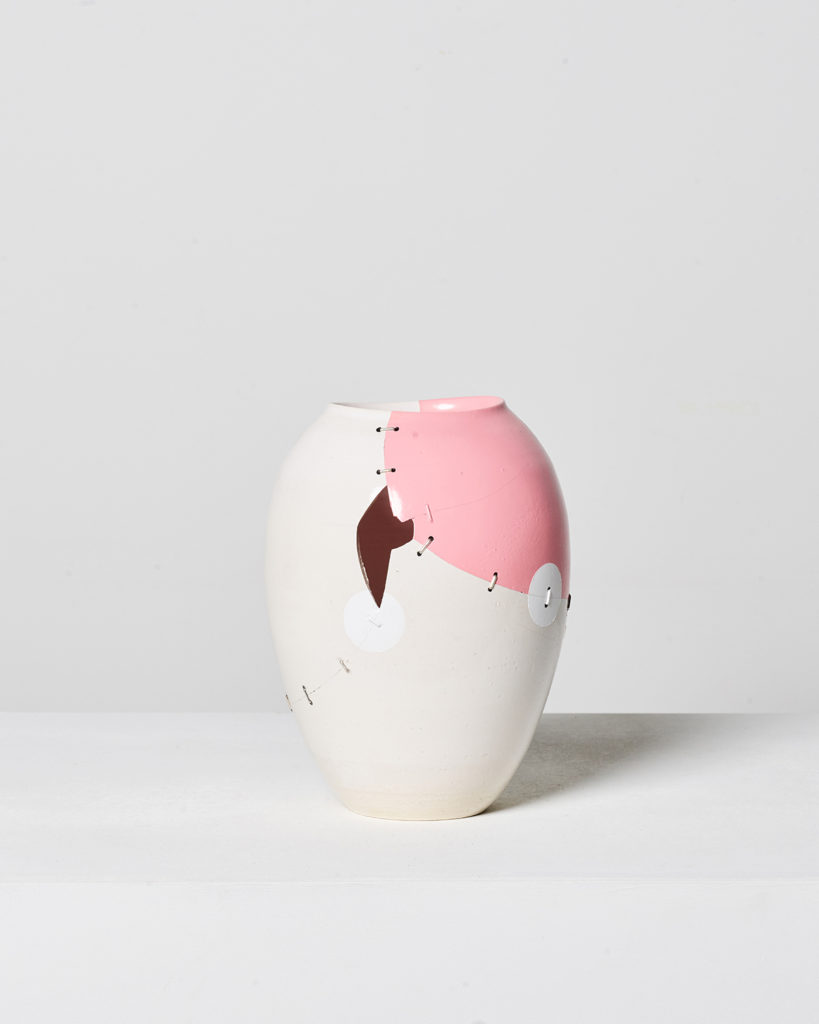Archaeologic, series 5
This vase in part of my Archaeologic series of repaired ceramics and was shown first at Melbourne Design Week in 2019 at Friends & Associates’ exhibition Welcome to Wasteland. It was then acquired by the National Gallery of Victoria though their Foundation for Living Australian Artists.
The vase experiments with different decorative effects over stapling repair, also known as riveting. Its a practice I began in 2017 when Trent Jansen asked me to repair his Jugaad terracotta plate broken en route from India to Australia.
My thanks to the NGV’s Ewan McEoin and Simone LeAmon for the honour of having this acquired.
Full text: Ceramic stapling is the most ancient and effective means to repair ceramics. Evidence of its existence dates back to the beginnings of metallurgy and until the mid-20th century the practice was widely spread across Eastern and Western spheres. Good quality stapling can bind broken ceramics closer and stronger than glues, making them watertight and durable. The practice is now functionally lost. There are a few possible reasons for the decline of this repair craft; such as the invention of petrochemical glues or the rising cost of labour, but the most likely is fossil fuel capitalism. The cost of producing and owning ceramics was that much greater before the 20th century era of cheap fossil energy. The issue isn’t so much that we don’t repair ceramics with stapling anymore, rather, we don’t repair ceramics much at all. In the context of a transition towards climate friendly, low-energy futures, innovation of lost arts have potential to reduce waste, revitalise repair, and extend material lifetimes.
I subsequently wrote about stapling practice in my article “Ceramic repair in the age of fossil fuel” for the Journal of Australian Ceramics.


